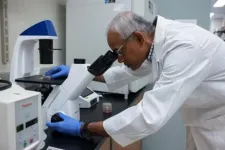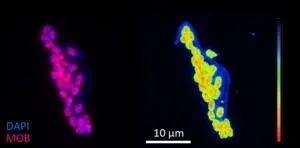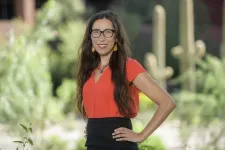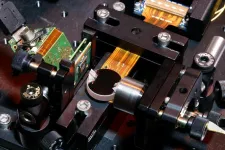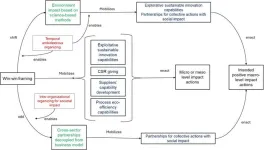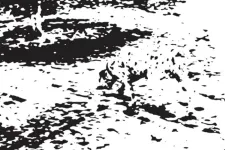(Press-News.org) INDIANAPOLIS — Researchers at the Indiana University Melvin and Bren Simon Comprehensive Cancer Center have completed the most extensive mapping of healthy breast cells to date. These findings offer an important tool for researchers at IU and beyond to understand how breast cancer develops and the differences in breast tissue among genetic ancestries.
Published this month in Nature Medicine, researchers developed a comprehensive atlas of breast tissue cells – including details on how genome is organized in each cell type and the effects of this genome organization on how RNA is made in each cell type to drive their function in various parts of the breast – using healthy breast tissue from women of diverse ancestry.
“Breast cancer shows variability in the outcome based on your genetic ancestry,” said Harikrishna Nakshatri, PhD, senior author of the study. “While socio-economics are certainly a contributing factor, we believe biology and ancestry also play a role. This study will help us to address that biological, ancestral aspect.”
Nakshatri is the Marian J. Morrison Professor of Breast Cancer Research at IU School of Medicine and a researcher of the Vera Bradley Foundation Center for Breast Cancer Research at the IU Simon Comprehensive Cancer Center.
Nakshatri’s lab sequenced 88,000 cell nuclei from 92 women who donated healthy breast tissue to the Komen Tissue Bank at the IU Simon Comprehensive Cancer Center. The donors included people of African, European, Indigenous American, Hispanic, East Asian, Southeast Asian and Ashkenazi-Jewish-European ancestry.
The cell mapping includes data not only on the genes expressed in various cell types, but also on how the genes are organized and what specific gene expressions are limited to each cell type. Researchers know breast cancer most often originates in specific cell types and where it originates leads to different cancer type and treatment responses. This study could improve understanding of breast cancer development and lead to identifying new treatment targets.
“This research aimed to understand the building blocks of the normal breast – meaning how many different cell types exist in the normal breast and do the building blocks of the cells show genetic ancestry-dependent variability,” Nakshatri said. “Unless we know from which cell types of the breast the cancer originates, we can't really figure out what exactly is going wrong in breast cancer compared to the normal breast.”
Previously available research resources have used normal tissue from breast cancer surgeries and reduction mammoplasty samples. The Komen Tissue Bank, the world’s only healthy breast tissue bank, offers IU researchers a unique opportunity for this study.
“We are using tissue from women who are clinically free of breast cancer; for that reason, we do believe the data that we created are close to perfect—truly the closest you can get,” Nakshatri said. “The data we generated from this is going to stay in perpetuity because it's going to be used by many, many groups for future research.”
The cell atlas information from the study will be broadly available to breast cancer researchers through databases offered by the National Institutes of Health, Human Cell Atlas and Chan Zuckerberg CELL by GENE Discover.
This research is the culmination of nearly five years of intense work from the Nakshatri lab and with bioinformatic analysis. Additional IU School of Medicine and IU Simon Comprehensive Cancer Center authors include Poornima Bhat-Nakshatri, Hongyu Gao, Aditi S. Khatpe, Adedeji K. Adebayo, Patrick C. McGuire, Cihat Erdogan, Duojiao Chen, Guanglong Jiang, Rana German, Lydia Emmert, George Sandusky, Anna Maria Storniolo and Yunlong Liu.
Writer: Candace Gwaltney, cmgwaltn@iu.edu
Source: Hari Nakshatri, hnakshat@iu.edu
For more news, visit the IU School of Medicine Newsroom: medicine.iu.edu/news
Follow us on X: @IUMedSchool
About the IU Simon Comprehensive Cancer Center
The Indiana University Melvin and Bren Simon Comprehensive Cancer Center is the state's only National Cancer Institute-designated Comprehensive Cancer Center and one of only 57 in the nation. The prestigious comprehensive designation recognizes the center's excellence in basic, clinical, and population research, outstanding educational activities, and effective community outreach program across the state. It is also one of only 33 members of the National Comprehensive Cancer Network. As a member, the center's physicians have a role in determining the recognized standard of clinical care for cancer patients. The center is the central hub for cancer research and education across Indiana University.
About the IU School of Medicine
The IU School of Medicine is the largest medical school in the U.S. and is annually ranked among the top medical schools in the nation by U.S. News & World Report. The school offers high-quality medical education, access to leading medical research and rich campus life in nine Indiana cities, including rural and urban locations consistently recognized for livability. According to the Blue Ridge Institute for Medical Research, the IU School of Medicine ranks No. 13 in 2023 National Institutes of Health funding among all public medical schools in the country.
END
Comprehensive atlas of normal breast cells offers new tool for understanding breast cancer origin
2024-08-12
ELSE PRESS RELEASES FROM THIS DATE:
Huang studying electric distribution system protection – Modeling and testing with real-time digital simulator
2024-08-12
Liling Huang, Associate Professor, Department of Electrical and Computer Engineering Dominion Energy Faculty Fellow, received funding for: “Electric Distribution System Protection - Modeling and Testing with Real-Time Digital Simulator.”
Huang will address the complexities of the electric distribution system introduced by Distributed Energy Resources (DERs) through Real-Time Digital Simulator (RTDS) modeling and Hardware-in-the Loop (HIL) simulation to enhance protection system ...
Singh receives funding for AI innovation for economic competitiveness
2024-08-12
JP Singh, Distinguished University Professor, Schar School of Policy and Government, received funding for: “George Mason University Center for AI Innovation for Economic Competitiveness.” He is collaborating on the project with Co-Principal Investigator Amarda Shehu, Associate Vice President of Research, Institute for Digital Innovation, Professor, Computer Science, College of Engineering and Computing (CEC); Jesse Kirkpatrick, Research Associate Professor, Philosophy, College of Humanities and Social Sciences; Acting Director, Institute for Philosophy and Public Policy, Philosophy and Religious Studies; Terry Clower, Northern Virginia Chair in Local ...
Bacteria in lakes fight climate change
2024-08-12
Methane is a potent greenhouse gas frequently produced in the sea and in fresh water. Lakes in particular release large quantities of this climate-killer. Fortunately, however, there are microorganisms that counteract this: They are able to utilize methane to grow and generate energy, thus preventing it from being released into the atmosphere. These microorganisms, known as methanotrophs, are therefore regarded as an important "biological methane filter".
Methanotrophs comprise various groups of microorganisms, and many questions about their way of life have yet to be answered. A study by researchers from the Max Planck Institute for ...
How cell nuclei organize eyes and brain
2024-08-12
(Santa Barbara, Calif.) — In work conducted both at UC Santa Barbara and the Physics of Life Excellence Cluster of TU Dresden, biophysicist Otger Campàs and his research group have found that cell nuclei control the architecture and mechanics of eye and brain tissues during embryonic development. These results add a new role for the cell’s nucleus in tissue organization, well beyond its established role in genetic regulation.
“We were measuring tissue stiffness in the zebrafish retina, and realized that it depended on the packing of nuclei. This was totally unexpected because tissue mechanics is believed to depend on cell surface interactions, but not ...
$1.5 million grant will build global network to prevent exploitation of Indigenous data
2024-08-12
TUCSON, Arizona — Researchers at the University of Arizona Mel and Enid Zuckerman College of Public Health and the U of A Native Nations Institute are establishing a framework that protects the way Indigenous data is collected and used around the world, thanks to a $1.5 million grant from the National Science Foundation.
For as long as researchers, health care providers and government agencies have studied Indigenous communities, there has been mistrust about the data collected. Indigenous peoples have raised concerns about who owns and profits from the data, as well as how it is used. Using the grant, the researchers, in ...
Engineers bring efficient optical neural networks into focus
2024-08-12
EPFL researchers have published a programmable framework that overcomes a key computational bottleneck of optics-based artificial intelligence systems. In a series of image classification experiments, they used scattered light from a low-power laser to perform accurate, scalable computations using a fraction of the energy of electronics.
As digital artificial intelligence systems grow in size and impact, so does the energy required to train and deploy them – not to mention the associated carbon emissions. Recent research suggests that if current AI server production continues at its current pace, their annual energy consumption could outstrip that of ...
"All of us urgently need to band together to pass a robust and just earth to future generations," says eminent environmental lawyer Edith Brown Weiss
2024-08-12
Amsterdam, August 12, 2024 – An article in a special issue on The Planetary Future published in Environmental Policy and Law (EPL) by IOS Press (now part of Sage), considers the Planetary Trust as an essential framework underlying today’s kaleidoscopic world, reviews important developments in implementing the Trust, and focuses on important steps to take now to ensure a just, robust Earth system for present and future generations.
Bharat H. Desai, PhD, Jawaharlal Nehru University, Centre for International Legal Studies, and Editor-in-Chief ...
Framing sustainability strategies for the enactment of corporate actions with positive macro-level impact: Evidence from a developing country
2024-08-12
Transforming Sustainability Strategies: Ecuadorian Corporations Leading the Way
The Bigger Picture: Shifting from Micro to Macro Impacts
The research redefines sustainability by examining how strategic framing can elevate corporate actions to achieve significant macro-level impacts. Moving beyond individual and community-focused efforts, the study highlights broad-scale changes that enhance societal and environmental well-being, including nationwide poverty reduction, environmental improvements, and public health advancements.
Corporations ...
Comparative safety of in utero exposure to buprenorphine combined with naloxone vs buprenorphine alone
2024-08-12
About The Study: There were similar and, in some instances, more favorable neonatal and maternal outcomes for pregnancies exposed to buprenorphine combined with naloxone compared with buprenorphine alone. For the outcomes assessed, compared with buprenorphine alone, buprenorphine with naloxone during pregnancy appears to be a safe treatment option. This supports the view that both formulations are reasonable options for the treatment of opioid use disorder in pregnancy, affirming flexibility in collaborative treatment decision-making.
Corresponding ...
Pink elephants in the brain?
2024-08-12
Our brain interprets visual information by combining what we see with what we already know. A study published in the journal Neuron by researchers at the Champalimaud Foundation, and supported by the CaixaResearch Health Call of the la Caixa Foundation, reveals a mechanism for learning and storing this existing knowledge about the world. They found that neurons are wired to connect seemingly unrelated concepts. This wiring may be crucial for enhancing the brain’s ability to predict what we see based on past experiences, and bring us a step closer to understanding how this process goes awry ...
